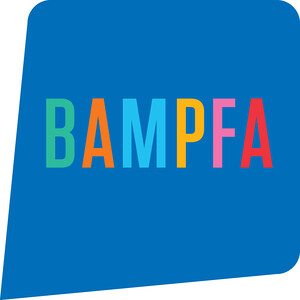Against the Static
October 17, 2018–January 27, 2019
2155 Center Street
Berkeley, CA 94720
USA
This long-overdue, comprehensive retrospective presents work from throughout the four-decade career of Harvey Quaytman, an under-recognized figure in twentieth-century American painting noted for his monumental shaped canvases, material investigations, and interest in color as a pure medium. Drawing from private and museum collections, Harvey Quaytman: Against the Static features more than seventy paintings and drawings, including many of the artist’s rarely seen shaped canvases from the 1960s and 1970s.
Quaytman’s groundbreaking body of work resides at the juncture of Abstract Expressionism, Minimalism, Process Art and Constructivism—where considerations of line, distilled geometric forms, materiality, atmosphere, and texture coalesce. In contrast to many of his contemporaries who were moving out of the studio and away from painting in the 1960s and 1970s, Quaytman remained committed to working on canvas and to pushing the modernist idiom in a new direction with monumental shaped canvases that demonstrated his unique vision and style.
A native of Far Rockaway, Queens, Quaytman came of age in New York’s thriving downtown art scene of the late postwar era, just as Abstract Expressionism was beginning to wane and newer movements such as Minimalism and Pop Art were taking root. He began his career in the early 1960s, making gestural, abstract paintings inspired by the work of Willem de Kooning and Arshile Gorky. By the late 1960s, his focus on the character and shape of brushstrokes evolved into a unique style that blended minimalist abstraction with his interest in gesture, color, movement, and tactility. Influenced by twentieth-century icons Kazimir Malevich, Piet Mondrian, and Henri Matisse, Quaytman’s work reveals a fascinating interplay between earlier strands of European Modernism and American postwar abstraction.
A self-professed “classical modernist,” Quaytman was deeply interested in the combination of shape, color, line, geometric pattern, and surface texture. Many of his earliest works employ the motif of a linear arc to create a lyrical, even playful effect—exemplified in such paintings as Second Cupola Capella (1969), above. His use of the curve is related to his interest in movement, propelling the eye across the painting.
Quaytman developed a unique, sculptural mode of painting, making curved stretcher bars himself by scoring and steaming them in his studio in New York’s Bowery district. The resulting paintings, often distinguished by an arc shape that imbues them with a sense of movement, are also distinct for their attention to surface texture and experimental application of color as in Harmonica YP (1972), a highlight of BAMPFA’s collection. While these works display a rigorous commitment to formalism, they are simultaneously invested with rich undertones of sensuality, complexity, and humor.
The mid-1980s heralded a new direction in Quaytman’s painting, although his systematic investigation of form, materials, color, shape, and movement remained. The new definitive shape assumed the form of equilateral crosses, within the confines of more traditional square and rectangular formats witnessed in a painting like Wanderer (1987). These works present an austere contrast to his early paintings. And yet, through subtle chromatic and linear shifts, Quaytman was able to inject novelty into the most stable and historical of forms, and to keep the viewer’s eyes in continual motion. As Quaytman once asserted in an interview, “my entire enterprise is against [the] static.”
In conjunction with the opening of Harvey Quaytman: Against the Static, exhibition curator Apsara DiQuinzio presents a curator’s talk on Wednesday, October 17 at noon. On Saturday, October 20 at 1:30pm, DiQuinzio will be joined by a panel of scholars and artists for a symposium, Against the Static: New Perspectives on the Art of Harvey Quaytman. Panelists joining DiQuinzio for this discussion positioning Quaytman’s innovations within the history of abstraction in the United States and abroad include: R. H. Quaytman, noted artist and Harvey Quaytman’s daughter; Suzanne Hudson, associate professor of art history and fine arts at the University of Southern California; David Carrier, a philosopher who has written on Quaytman; and moderator Jennifer Gross, who knew Quaytman personally.
Support
Harvey Quaytman: Against the Static is organized by Apsara DiQuinzio, curator of modern and contemporary art and Phyllis C. Wattis MATRIX Curator, with Valerie Moon, curatorial assistant. The exhibition is made possible with lead support from the Terra Foundation for American Art, The Andy Warhol Foundation for the Visual Arts, R. H. Quaytman, Renee and David McKee, and Van Doren Waxter, New York. Additional in-kind support is provided by the Harvey Quaytman Trust.



